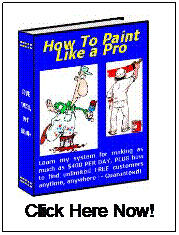Painting Interior Walls – 8 Steps For Doing a Professional Job

Painting interior walls was done without much thought for perfection before I became a house painter. The only reason I became a house painter is because that was all I thought I knew.
I’m really curious about how I used to even paint a wall. Here are the steps I take today as a professional painter.
1.) First, I like to sand the walls down before doing any painting. I have a pole sander for that. I use 100-grit sandpaper on it. I take off switch and socket covers as I go.
2.) I’m super-fast and good at prep work. The reason for this is because I take all the guess work out of it by first rolling out a primary coat even before cutting in. Sometimes I use a primer but most of the time the first coat is just wall paint.
Recommended tools: Wooster or Purdy Cage frame (7” or 9” frame) and Wooster, Allpro or Purdy 3/8” nap, shed resistant roller cover (7” or 9” covers)
3.) Next I cut in along the top of the wall and then in the corners and along the bottom next to the trim.
Recommended tools: Wooster, Purdy, Allpro, Sherwin Williams, 2” angular paintbrush (good for cutting in sharp lines along the ceiling or next to wood trim).
4.) Next I will dry the wall quickly with a small fan.
5.) Now after sanding the wall, rolling it out, cutting it in, etc. I know the wall pretty well and I can see my defects. Paint doesn’t hide a multitude of sins, it reveals them.
I now will sand and fill all nail holes or repair drywall defects using quick-dry drywall joint compound. This is what makes prep work go fast -– you know exactly what you need to do!
6.) Next, I sand the repairs or prepped areas after they dry and paint a coat over them to seal them up.
7.) Next, while the primed spots are drying, I cut in everywhere and then I roll out the wall the final coat.
(I always do like the instructions on the roller cover say to do. When painting interior walls I work in squares forming a “W” or an “M” pattern and filling it in like a square block. I work from left to right rolling out square blocks as I go.)
8.) Now put your switch and socket covers back, you’re done!

What did you find the most helpful about this information on painting interior walls? Thanks for visiting. Please click here for more info.
Return to Painting Tips Home